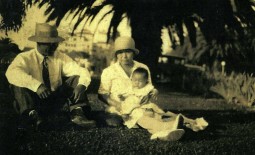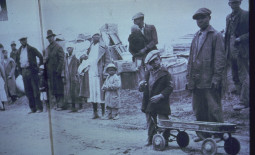LA’s Oasis for African Americans – Val Verde
For those amongst Los Angeles’ seniors who are of a racial minority background, the memories of Los Angeles as a racially segregated city are still fresh and painfully raw. Even as late as the early 1980s, Black Angelenos could not buy or rent homes in many areas of the city and surrounding suburbs. But even restaurants, hotels, public drinking fountains and restrooms, public swimming pools, movie theaters, and so on, were forbidden to LA’s African Americans (as well as to other ethnic minorities). Beginning from the founding of the city as an American place in 1850 (Los Angeles was first a Native American village, followed by becoming a Spanish and Mexico pueblo) Los Angeles has, with some exceptional bright spots, a dismal history of ethnic and racial relations for all of its first one hundred years, and even beyond. Ugly Jim Crow laws and the widely held and persistent racist belief in white supremacy was not restricted to the American South, but also extended throughout the rest of the nation in various forms. In comparison to the intensity of hatred and hateful laws in other regions, Los Angeles was widely regarded among the nation’s African Americans of that era as an oasis where they could co-exist with whites in a less intolerant and violent atmosphere and where the racial laws were less humiliating and oppressive. Consequently millions of African Americans migrated in a mass exodus to LA, beginning from the early 20th century and well into the 1970s and even after, to seek and find a better life. But Los Angeles was not immune from the American obsession with race, and from the unjust and inhumane policies and restrictions imposed on racial minorities in the rest of he country. For example, for Blacks, Jews, Mexicans, Asians and others, LA’s famous recreational venues for hiking and camping in the magnificent natural surroundings, and LA’s many resorts for family vacations and celebrations were strictly off-limits to them. The only solution for LA’s minorities was to buy land where they could create their own racially friendly oasis.
One such place became a very important part of Los Angeles’ growing black community from the 1920s and on into the 70s: Val Verde. Located just north of the San Fernando Valley section of Los Angeles, near the bucolic ranch lands north of Newhall, Val Verde became possible when a socially progressive white Pasadena woman, outraged that blacks had no place where they could picnic with their families (except for one park in Pasadena that was open to them just one day a year), bought land there and made it available to black families. In 1924, African American entrepreneurs, actor and real estate developer Sidney Dones, and well-known newspaper owners Joe and Charlotta Bass, among other LA black community notables, joined together to buy the 1,000 acres with the intent to sell lots to other blacks so it could develop into a resort community especially for them. They named their development “Eureka Villa” and began to sell parcels. In 1928, the development became an independent township and was renamed Val Verde. Though there were a few other places blacks in the LA area could go to for recreation, such as one spot at Lake Elsinore in distant Riverside County, and a small section of Venice Beach designated “for negroes”, Val Verde became the most important recreational mecca for LA’s black community because of its size and beauty, the relative proximity to LA’s urban center, and the variety of amenities it offered families – a community house, tennis courts, baseball fields, hiking trails and a nine-hole golf course. Even in the depths of the Great Depression, Val Verde was enormously popular and LA’s black families flocked to enjoy the fresh air, swimming and the other amenities, and numerous dances, communal barbecues and picnics. It became known as “the black Palm Springs,” and it became a destination for Blacks from around the country as well. In June 1940 black film actress and Academy Award winner Hattie McDaniels presided over the opening of a $125,000 Olympic-sized pool complete with a bathhouse built with the assistance of the WPA.
But more than the relaxation and recreational amenities that Palm Spring could offer whites, Val Verde offered LA’s blacks literally refuge and safety. Weddings and other important family, community and social events were often celebrated there rather than in LA’s hotels or parks because nearly all of LA’s venues for big events were off limits to them. Frank Goddens, Val Verde promoter, civil right activist and homegrown historian of LA’s African American culture, was associated with every important development at Val Verde until the 1970s. In 1940, he introduced to Val Verde’s panoply of events women’s beauty contests and muscle men competitions. In an era when people of color were regarded as inferior to white people in physical appearance, these beauty contests had enormous significance in counter-acting the relentless onslaught of negative white stereotypes about blacks. (Mr. Goddens passed away August 3, 2012 in Los Angeles at the age of 101.)
Val Verde became a very important part of the experience of being a person of color in Los Angeles for much of the 20th century. Numerous African American seniors to this day recall the sense of personal freedom and unfettered camaraderie that Val Verde made possible for them and their families. Long-lasting friendships, social and business relationships and opportunities, a rich cultural history, and countless photo albums and home movies filled with cherished memories were created at Val Verde. In an era when simply having dark skin and “Negroid features” was enough in nearly all places to make you, your family members and friends intentionally ignored by whites, or intensely unwelcome, or banned, or the object of ugly derision or hostility, being able to take your children, parents, friends to a lovely place where the other people there were happy to see you and welcomed you with smiles, hospitality and warmth – this was a rare, but all the more joyful experience within LA’s segregated and racially poisoned past.



